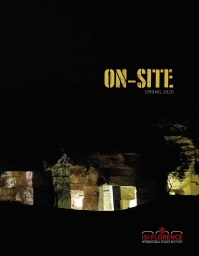
Anno/Year 2020
100 pagine/pages
90 illustrazioni/illustrations.
21x29,7 cm.
ISBN 9788833840642
4_ONSITE_2020
Architecture is alive. It exists in context. What’s more, only in context architecture has always found mean-ing. Context is the ON-SITE of architecture. It is in context that we must look carefully to rediscover the beating heart of architecture.
Architecture and context have always had relations with intricate plots, where cultural, political, eco-nomical and technical issues merge inseparably. It is vital to guess, to know which is the structure, the can-vas, the picture, the plot where architecture is nested so as to detect it and to re-trigger it.
Context is an unfinished choral book from which ar-chitecture takes meaning and energy. In turn, architec-ture, too, contributes its own “episodes” to it. Context is like a cloud, whose precise form develops from a pre-vious form at a given moment and is doomed to fade in the immediate future, thus leading to a continuous evolution. Architecture operates in this evolution; it is influenced by it and it influences it in turn. Therefore, it is more important to take into account the structural values of the context rather than chas-ing the exaggerated individuality and self-referential-ity of the building and its technology. Understanding the dialectical relationship between the structure of the context and the formal structure of architecture is a pressing, necessary question if we wish to revive architecture and make it fertile again.
Rescued by Context (to return to the fable above for a moment), Architecture saved its transdisciplinary role. Out of gratitude, it will take care of Context by setting it as the focus of its own interests. Architectur-al design will use the built environment as a quarry of data able to inform future projects, both from a conceptual and a physical point of view. Understandably, the most physical component of context is the environment, both built and natural. Today more than ever the built environment needs design and the multifaceted character of architecture. It requires architects not only as mere designers of good buildings but mainly as professionals able to read, interpret and fix. Due to ecological emergen-cies, sustainability issues and lack of sensitivity, there is not a single acre of virgin land that is worth “an-thropizing” by encrusting it with buildings. Architects are needed for their capacity of envisioning, thus pairing theory and practice. They are required to help and support decision making; to research build-ing materials and technologies; to rediscover the laws of nature hidden behind codes; to consider and ad-vise the so-called “informal sector”; to fix urban mis-takes, to restore and repurpose historic buildings; to speak of style and aesthetics. In other words, they are needed to promote concepts and ideas that can help the built environment evolve toward an accessible and enjoyable place where life can happen.
The built environment is and will be the target of ar-chitecture, whether we speak of the natural expres-sion of the rural environment brutalized by intensive exploitation or the urban environment traumatized by a century of economic speculation.
The built environment is the ON-SITE of the fu-ture of Architecture.
Architects must master the ability of reading the built environment, of taking the ON-SITE approach as an opportunity to contribute a verse to the plot of the built environment. Under these conditions, reading, understanding and interpreting the built environ-ment are design tools. Verbs like to evaluate, re-use, fix, re-cycle, get rid, clean-up, complete, re-purpose, wipe out, make room, occupy, extend, implement, reorder, sew up and so on must become main actions for architectural design.
